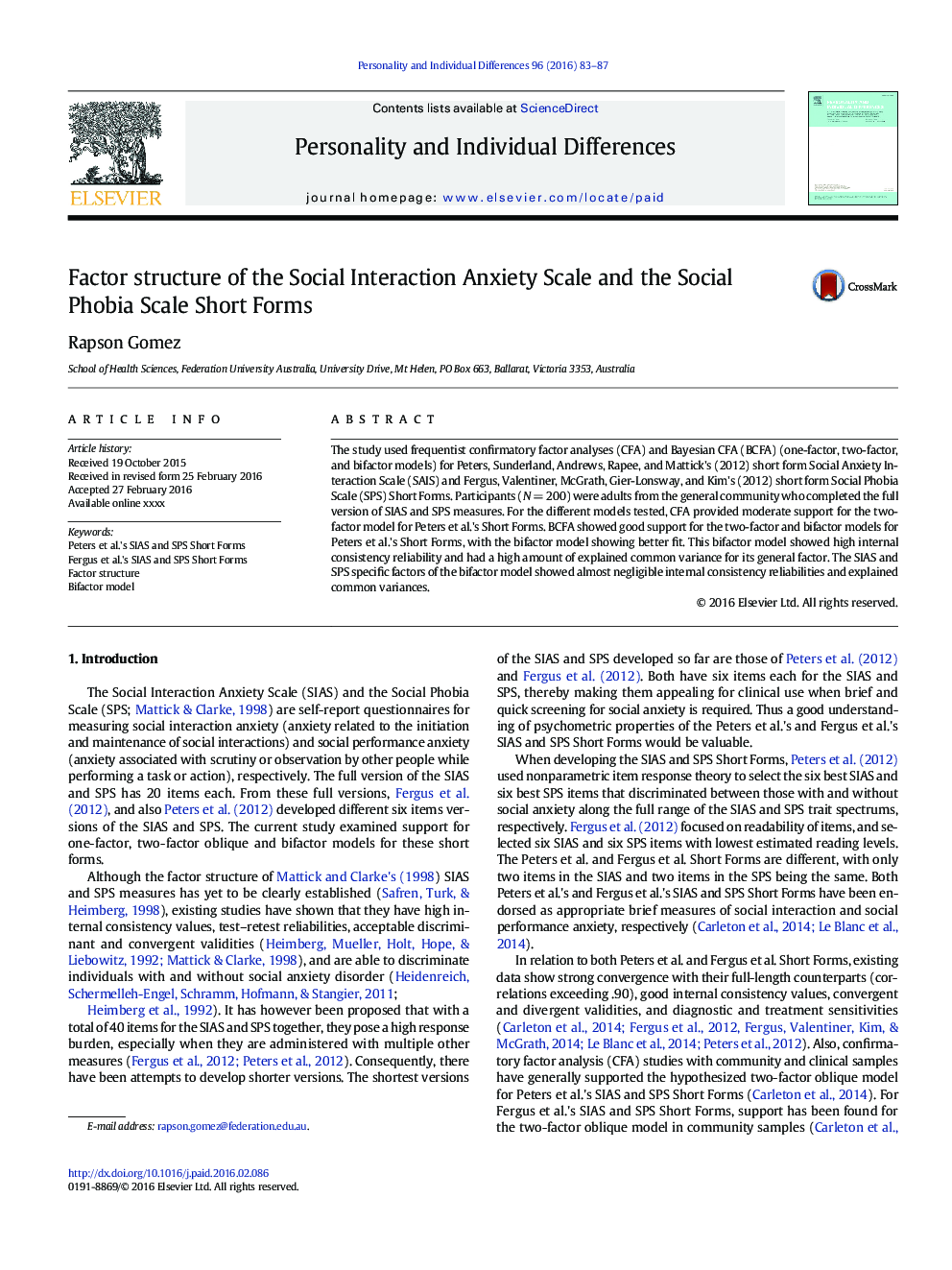| Article ID | Journal | Published Year | Pages | File Type |
|---|---|---|---|---|
| 7250024 | Personality and Individual Differences | 2016 | 5 Pages |
Abstract
The study used frequentist confirmatory factor analyses (CFA) and Bayesian CFA (BCFA) (one-factor, two-factor, and bifactor models) for Peters, Sunderland, Andrews, Rapee, and Mattick's (2012) short form Social Anxiety Interaction Scale (SAIS) and Fergus, Valentiner, McGrath, Gier-Lonsway, and Kim's (2012) short form Social Phobia Scale (SPS) Short Forms. Participants (NÂ =Â 200) were adults from the general community who completed the full version of SIAS and SPS measures. For the different models tested, CFA provided moderate support for the two-factor model for Peters et al.'s Short Forms. BCFA showed good support for the two-factor and bifactor models for Peters et al.'s Short Forms, with the bifactor model showing better fit. This bifactor model showed high internal consistency reliability and had a high amount of explained common variance for its general factor. The SIAS and SPS specific factors of the bifactor model showed almost negligible internal consistency reliabilities and explained common variances.
Keywords
Related Topics
Life Sciences
Neuroscience
Behavioral Neuroscience
Authors
Rapson Gomez,
